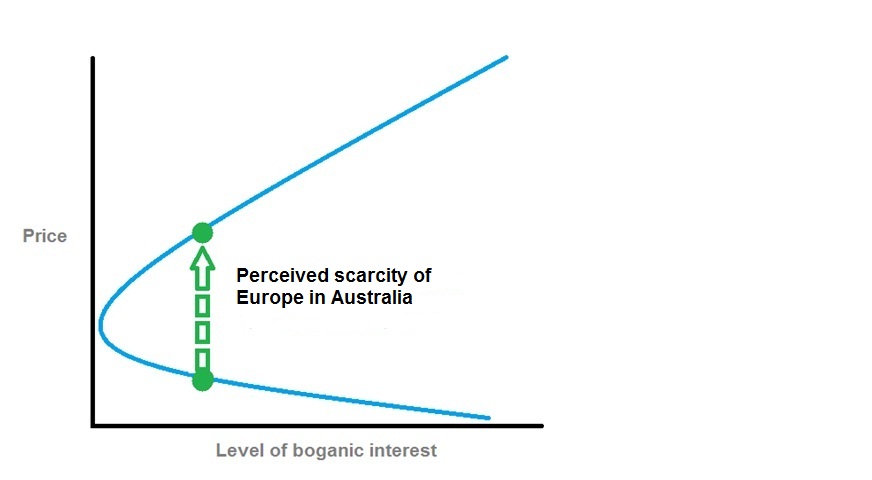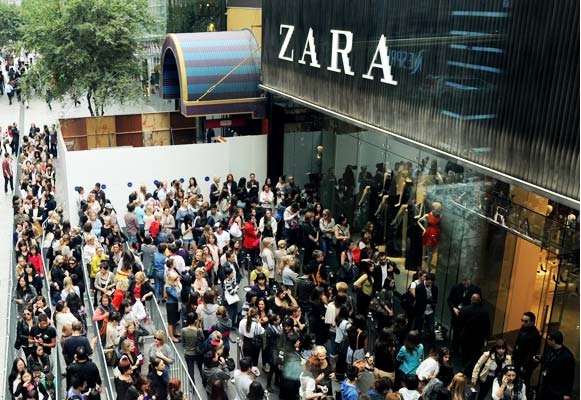The Australian retail climate isn’t particularly strong at the moment, because bogans are Doing It Tough. Confronted with historically low interest rates, a strong dollar, a resilient economy and low unemployment, the bogan knows that it has to cut back on some things in order to get by. Its newfound love of online retail and Australian retailers’ inability to, you know, build a functional online retail site, has left us something of a retail wasteland. Until you realise that compared to pretty much every other developed economy, we are, in fact, a retail oasis.
International fashion retailers have long avoided Australian shores like the plague. The market is small, the logistics confronting, the seasons reversed, and the local providers far too adept at convincing the bogan of what it needs to buy next. However, this has overlooked a key aspect of the bogan retail landscape; one that, it appears, we are soon to see exploited on a grand scale.
Ordinarily, the bogan will vocally advocate the purchasing of Australian products (Thai manufacturing notwithstanding), as a means of stroking its throbbing nationalism gland and providing Australians with jobs. But the modern bogan has travelled a bit. It managed a two-week trek across seven European countries courtesy of that great international bogan bus, Contiki. And what it took away from its jaunt across such a cultured locale is class. The bogan, upon returning, now seeks Euro style. It needs Euro style. Cosmopolitan style. Like the cocktail. Yet because of the reticence and lack of awareness of foreign companies, this yearning has gone unfulfilled.
Zara, being the fashion behemoth they are, figured it out first. If a European company can come to Australia, sell the same clothes to bogans that it already buys at local outfits, but make them more cheaply, they will win the retail battle. Why? Because the bogan believes that Europe is cool. Once upon a time this may have been true, as Italian designers tended to be confined to Italy, and products that featured on the catwalks in Paris and Milan often were rarely sighted east of the Alps. Today, however, all of these products are made with the same material by the same South East Asian tweens, irrespective of the label slapped inside the hem. As seen on the below graph, the bogan’s level of demand is closely correlated both to howcheap AND how expensive a product is:

The notion of perceived scarcity is an important one to the field of marketing, and one that has clearly been closely studied by the folk at Zara. Convince the bogan that something is ‘unique’ or ‘classy’ or ‘exclusive’, and the bogan wants it. At any price. The perceived scarcity of Europe in Australia means that the bogan, by default, assumes that all things Euro are better than all things Oz. The result is that when a Euro brand opens up, this eventuates:

In this, Zara share a very close relative in none other than Krispy Kreme. The American doughnut kings set up shop in Sydney first and, importantly, Sydney airport. For years, office workers the land over were returning from their Sydney day-trips laden with dozens of fat-and-glaze dough balls, and Krispy Kreme developed a reputation among bogans of being some kind of super doughnut, one that could only be accessed by those who achieved the rarefied heights of air travel. Thus, when KK Melbourne opened up in the outer suburb of Narre Warren, bogans travelled from miles around to queue up for hours to access the thousands of empty calories available at inflated prices.
However, as soon as KK began its expansion into the general morass of Victorian suburbia, the bogan turned on the famed American doughnut as too unhealthy for its already burgeoning waistline. And proceeded to shun it like its own recalcitrant offspring.
In this, Zara are the vacuous fashion calories that the bogan has craved since Ed Hardy’s Australian stores shut their doors late last year. Reinforcing the Euro-dazzling effect that Zara has on bogans and bogans’ wallets is the marked lack of cattle-race-queuing bogans for the opening of GAP stores since the American chain opened up earlier this year. Because the bogan watches at least 17 hours of American television each weekday, our #1 ally is seen as familiar, comfortable and pleasing to the bogan; not something to be courted and paid for. Zara on the other hand, are seen as exotic, worldly and debonair.
Indeed, if Zara works the bogan right, we at Maxtreme Consulting confidently predict a forthcoming baby boom, all of whom will carry for life the dizzyingly alluring brand name Zara. In time, this will enable Zara (the firm), to redirect its marketing budget straight to the bottom line!
However, we caution, to achieve this margins Nirvana, limited expansion, unlike the bogan waistline, is the key discipline. As always, Maxtreme Consulting stands ready to assist, with its recently formed retail arm available for further details.